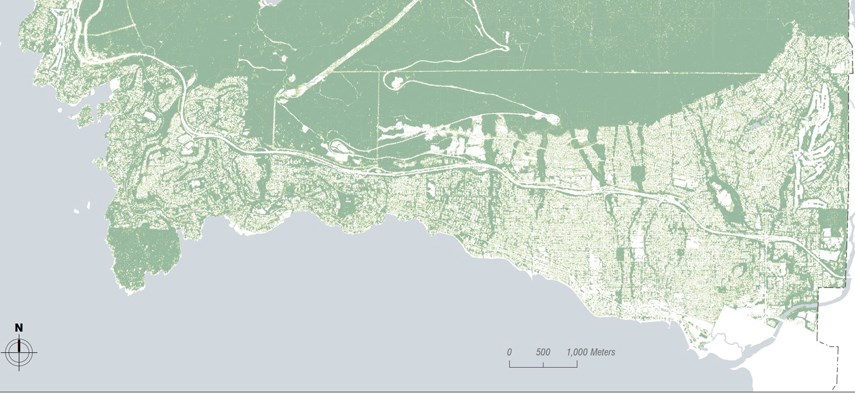Despite what you may have heard about chainsaw massacres, West Vancouver is getting greener.
That is according to the results of the recent LiDAR study of the municipality’s tree canopy.
The study, which was carried out in 2018, used an airplane mounted with a laser to measure the amount of foliage.
Since 2013, the last time a LiDAR study was done, the amount of West Van’s developed neighbourhoods covered by tree canopy has gone from 43.7 per cent to 51.1 per cent. Some neighbourhoods are getting greener than others with the British Properties, Altamont, Caulfeild and Westmount showing the least new growth.
Council funded the study to help inform the long and controversial process of settling up a bylaw that restricts the removal of trees on private property, which council has been wrestling with since the real estate boom brought with it buyers and developers looking to clear-cut single-family lots and redevelop them with mansions.
Council says the LiDAR results show there is no need to drastically stiffen up its tree bylaw, which allows most trees on private property to be cut down, unless they have trunk circumference of 75 centimetres or more.
A sizeable group of diehard leaf fans, however, called in or showed up at council Monday night to say the bylaw was still lacking. Many were incredulous of the results.
“Your LiDAR survey is … only one of a number of indicators of the size and health of the urban forest. LiDAR does not count trees. And there is absolutely no doubt that we have lost trees between 2013 and 2018,” said Mathers Avenue resident Rainer Fassler, adding that any trees thicker than 25 centimentres should be given protection. “It is not a difficult thing to do. It just takes a small dose of political courage and belief that you're doing the right thing in the long run.”
Others reminded council of their declaration of a climate emergency and called for even smaller trees to be granted protection. District staff, however, warned they wouldn’t have enough resources to process all the applications that would come in if smaller trees required permits to be removed.
Council opted the leave the 75-centimetre rule as-is, and instead asked staff to begin drawing up some more minor revisions to the bylaw. Among the changes: bringing more clarity to pruning standards and when a permit is required; making the tree removal application process simpler; restricting removals during bird nesting season; including replanting requirements; and giving automatic protection to more species of trees (Pacific yew, Pacific dogwood, yellow cedar and shore pine).
Coun. Nora Gambioli said she was surprised by the LiDAR results, given the “shocking” changes that could be seen at street level in some neighbourhoods. But, she added, she was left feeling encouraged.
“I realize it's not the be all and end all of information, but it’s not so bad,” she said. ‘We're doing pretty well. We're doing better than we expected, so I’m comfortable to have these amendments back as soon as possible … and I think that's going to address a lot of concerns in public.”
Council’s support was unanimous.
Council also passed separate motions asking staff to include more LiDAR studies as well as a more comprehensive urban forest management plan to be included in their 2021 budget requests.



